Progress on Childhood Obesity
Many States Show Declines
August 2013


 1 in 8
1 in 8
About 1 in 8 preschoolers is obese in the US.
 19
19
Obesity among low-income preschoolers declined, from 2008 through 2011, in 19 of 43 states and territories studied.
 5x
5x
Children who are overweight or obese as preschoolers are 5 times as likely as normal-weight children to be overweight or obese as adults.
Obese children are more likely to become obese adults and suffer lifelong physical and mental health problems. Obesity rates in low-income preschoolers, after decades of rising, began to level off from 2003 through 2008 and now are showing small declines in many states. However, too many preschoolers are obese. State and local officials can play a big part in reducing obesity among preschoolers.
State and Local Officials can:
- Create partnerships with community members such as civic leaders and child care providers to make community changes that promote healthy eating and active living.
- Make it easier for families with children to buy healthy, affordable foods and beverages in their neighborhood.
- Help provide access to safe, free drinking water in places such as community parks, recreation areas, child care centers, and schools.
- Help local schools open up gyms, playgrounds, and sports fields during non-school hours so more children can safely play.
- Help child care providers use best practices for improving nutrition, increasing physical activity, and decreasing computer and television time.
Problem
Too many preschoolers are obese
1 in 8 (12%) preschoolers is obese.
- About 1 in 5 (19%) black children and 1 in 6 (16%) Hispanic children between the ages of 2 and 5 are obese.
- Obese children are more likely to be obese later in childhood and adolescence. In these older children and adolescents, obesity is associated with high cholesterol, high blood sugar, asthma, and mental health problems.
- Children who are overweight or obese as preschoolers are 5 times as likely as normal-weight children to be overweight or obese as adults.
Obesity rates among preschoolers are improving, but there is more work to be done to continue this downward trend. Among low-income preschoolers (ages 2-4 years) from 2008-2011:
- Obesity rates decreased slightly in 19 of 43 states and territories.
- Obesity rates increased slightly in 3 of 43 states and territories.
- Obesity rates did not change in 21 of 43 states and territories.
Infographic
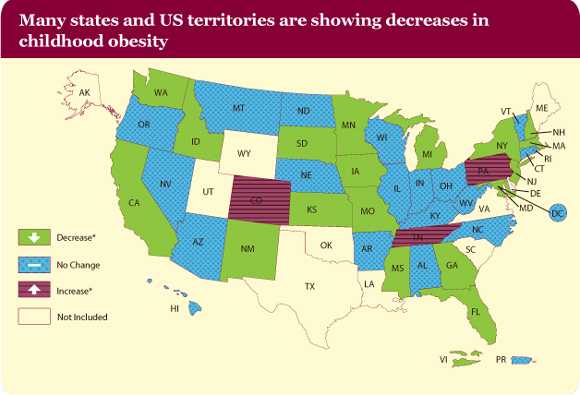
Read text version
SOURCE: Pediatric Nutrition Surveillance System, 2008-2011. *Represents statistically significant annual decrease or increase in obesity.
To learn more about how childhood obesity is measured.
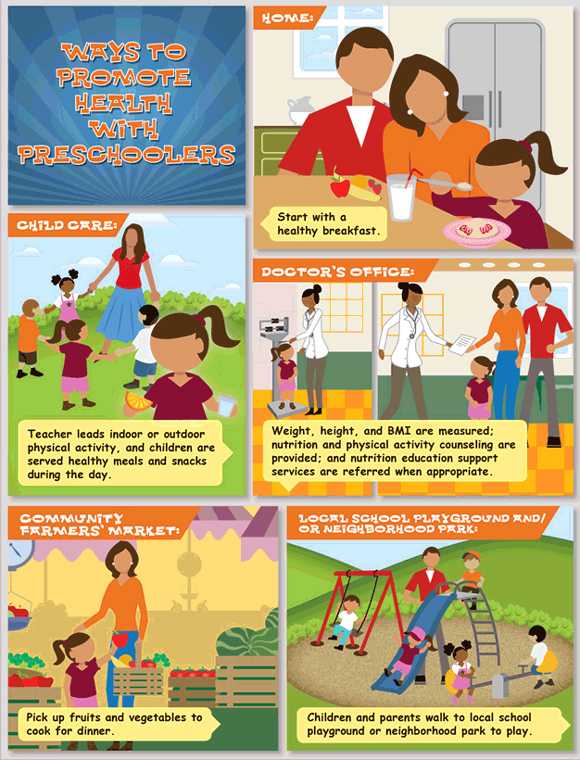
Read text version
SOURCE: CDC. MMWR. 2009 July; 58(RR-7): 1-26.; AAP, APHA, NCR for Health and Safety in Child Care and Early Education. 2011. nrckids.org; Spear BA, et al. Pediatrics. 2007.
What Can Be Done
Federal government is
- Funding states and communities to implement programs that promote healthy eating and physical activity.
- Measuring trends in childhood obesity and its risk factors.
- Funding research to investigate the causes and effects of childhood obesity and to identify effective interventions.
- Providing training and resources for parents, child care centers and communities to help prevent childhood obesity through initiatives such as We Can! and the First Lady’s Let’s Move! initiative.
- Helping low-income families to get affordable, nutritious foods through programs such as the Supplemental Nutrition Program for Women, Infants, and Children (WIC) and the Child and Adult Care Feeding Program.
State and Local Officials can
- Create partnerships with community members such as civic leaders and child care providers to make community changes that promote healthy eating and active living.
- Make it easier for families with children to buy healthy, affordable foods and beverages nearby.
- Help provide access to safe, free drinking water in places such as community parks, recreation areas, child care centers, and schools.
- Help local schools open up gyms, playgrounds, and sports fields during non-school hours so more children can safely play.
- Help child care providers use best practices for improving nutrition, increasing physical activity, and decreasing computer and television time.
Doctors and nurses can
- Measure children’s weight, height and body mass index routinely.
- Counsel parents about nutrition and physical activity for their children.
- Connect families with community resources such as nutrition education and breastfeeding support services.
Child care providers and parents can
- Serve fruits and vegetables and other nutritious foods for meals and snacks.
- Be role models by eating healthy meals and snacks with preschoolers.
- Make water easily available throughout the day.
- Limit the time preschoolers watch TV or use the computer in child care and the home.
- Support and encourage preschoolers to be physically active every day.
Additional Graphics
Additional graphic and images can be viewed and downloaded from the CDC News Room Digital Press Kit.
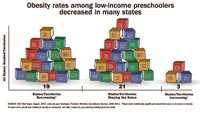
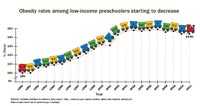
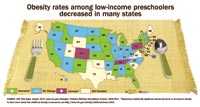
Science Behind the Issue
Related Pages
- CDC News Room – Digital Press Kit: Progress on Childhood Obesity
- Vital Signs Issue details: Morbidity and Mortality Weekly Report (MMWR): Vital Signs: Obesity Among Low-Income, Preschool-Aged Children—United States, 2008—2011
- VitalSigns – Childhood Obesity [PODCAST – 1:15 minutes]
- VitalSigns – Childhood Obesity [PSA – 0:60 seconds]
- VitalSigns – Obesidad en niños: [PODCAST – 1:15 minutes]
- Childhood Overweight and Obesity
- Child and Teen BMI Calculator
- About BMI for Children and Teens
- Overweight and Obesity
- Breastfeeding Promotion and Support
- Winnable Battles: Nutrition, Physical Activity, and Obesity
On Other Web Sites
- Page last reviewed: August 6, 2013
- Page last updated: August 6, 2013
- Content source:
- National Center for Chronic Disease Prevention and Health Promotion, Division of Nutrition, Physical Activity, and Obesity
- Page maintained by: Office of the Associate Director for Communications (OADC)


 ShareCompartir
ShareCompartir